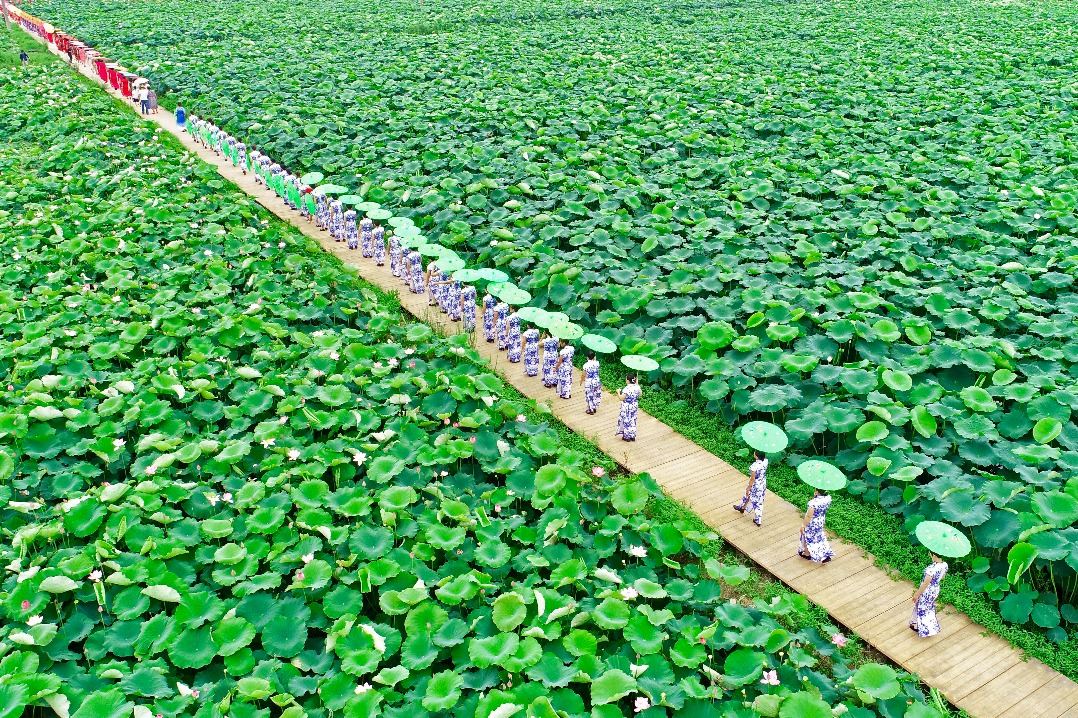Cameras discover secrets of Mangshan
Infrared monitors capture footage of elusive musk deer in Hunan reserve

Grassroots expert
Nestled on the northern slope of the Nanling Mountains, spanning Hunan and Guangdong provinces, the Mangshan reserve in Yizhang county was designated as a provincial nature reserve in 1984 and upgraded to a national nature reserve in 1994.
In 1989, Chen Yuanhui, a ranger at the reserve, made a groundbreaking discovery alongside Zhao Ermi, a distinguished herpetologist at the Chinese Academy of Sciences, by identifying the Mangshan pit viper as a distinct species. With a global population of fewer than 500, the viper has become a flagship species for Mangshan.
Due to his dedicated conservation efforts and extensive research on venomous snakes, Chen Yuanhui has become the first and most renowned grassroots expert from the reserve, known as "Dr Snake". In recognition of his contributions, the reserve's management bureau erected a statue in his honor at the Mangshan National Forest Park, a part of the reserve.
Although Chen Yuanhui retired in 2009, his legacy lives on through a new generation of grassroots conservationists in Mangshan, with Chen Desheng among those carrying forward his invaluable work.

When he started working with the Mangshan reserve in 1989, he was a recent college graduate with a degree in metallurgy.
"The reserve's precursor was a forest farm that also housed a metallurgical plant as its production facility," Chen Desheng, 55, told China Daily.
The plant, however, ceased operations in 2003. Following the plant's closure, Chen Desheng was reassigned to the reserve's Xiangsikeng patrol station in 2005. Transitioning into the role of a forest ranger, he assumed responsibilities for conducting daily patrols and monitoring wildlife activities.
"The challenge was there and I had to learn from scratch," he said.
The positive thing is that the reserve, with an area of nearly 20,000 hectares, has long been renowned for its abundant biodiversity, attracting researchers from diverse fields for various surveys.
Often serving as an assistant, Chen Desheng had the invaluable opportunity to learn alongside experts.
He honed his skills in identifying wild plants, amphibians, reptiles and bird-watching, while actively monitoring amphibians with Chen Jun, head of the Xiangsikeng station since 2014.
In 2017, the reserve collaborated with Hunan Normal University to initiate an infrared camera project. Dividing the reserve into over 100 grids, each covering one square kilometer, the project aimed to monitor wildlife inhabiting the area.
Wang Bin, an assistant professor from the university's life science college, and his students guided reserve rangers in setting up infrared cameras across the grids to commence wildlife monitoring.
"At the peak, there were more than 100 infrared cameras working in the wild," Chen Desheng said. "At present, there are about 60 cameras on the mountains."
Chen Desheng, leveraging his engineering background, swiftly mastered camera setup, battery replacement and data retrieval, gradually assuming a pivotal role leading the survey. He shouldered the primary responsibility for fieldwork with the camera.
"That means a lot of hard work," he said.
Every four to five months, accompanied by two patrolmen, Chen Desheng visited each camera site, ensuring its functionality and collecting digital cards.
"We could only visit two remote sites, or four to five nearby sites, in a day," he explained. He needs to visit all of the camera sites at least twice in a year.
In a wildlife and plant identification competition organized by the provincial forestry department for rangers in Hunan, Chen Desheng clinched third prize for the Mangshan reserve. His expertise in camera-trapping surveys led to his transition to the reserve's science and public education department in 2020.




































